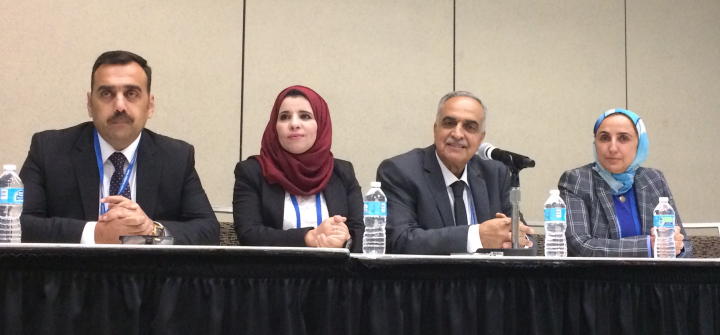Rebuilding Medical Education in Iraq
Battered by 3 major wars since 1980, Iraq has seen its life expectancy fluctuate dramatically: 58 years in 1999 to 63 in 2001 and 58 in 2005 and more recently 72 in 2011 before trending down to 69 in 2015, according to WHO data.
Since 2014 when ISIS seized territory in Iraq, more the 3.3 million people of the country’s population of 40 million have been displaced, increasing poverty and exacerbating health problems and a lack of access to health care.
As Iraq recovers stability today, an important step in rebuilding Iraq’s health system is for the country’s 25 medical schools to produce more physicians, said Mohammed Al-Qurtasi, dean of the Al-Kindy College of Medicine at the University of Baghdad. While the U.S. has 230 general practitioners per 100,000 people, Iraq has less than 10 (Malawi has just over 1), Al-Qurtasi said during a Wednesday morning talk at the American Society of Tropical Medicine and Hygiene conference (#TropMed17).
In addition to producing more physicians, Iraq’s medical schools need to produce better educated physicians, said Eklhas Khalid Hameed, an assistant professor at Al-Kindy. To that end, Al-Kindy began revamping its curriculum in 2012. “We decided it was time for a change,” said Khalid Hameed. “We want our curriculum to be in accord with international guidelines.”
The old curriculum was teacher-focused and included lectures in large halls and inadequate clinical experience; while the new curriculum emphasizes small-group work and an integrated systems-based approach to medical education.
The biggest challenge? Overcoming senior faculty’s resistance to change. “Each head of a department wants to be king of his department,” she said. “With every change, we have a lot of challenges. It will never be easy.”
Iraqi medical school faculty (l. to r.): Mohammed Al-Qurtasi, Eklhas Khalid Hameed, Ebtisam Khalid and Taghreed Khalil Alhaidari. (Photo: Brian W. Simpson)





